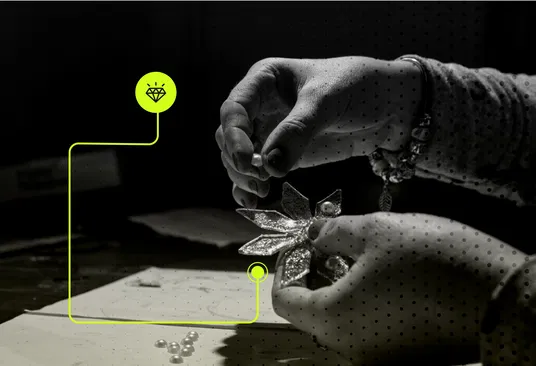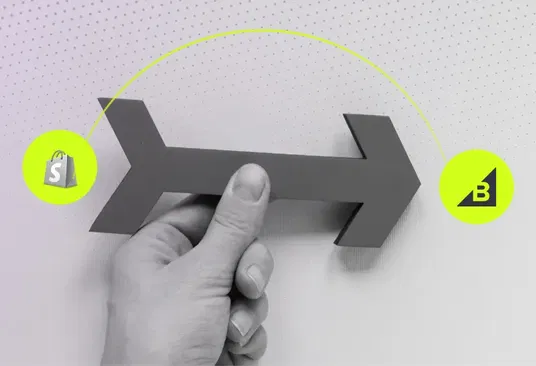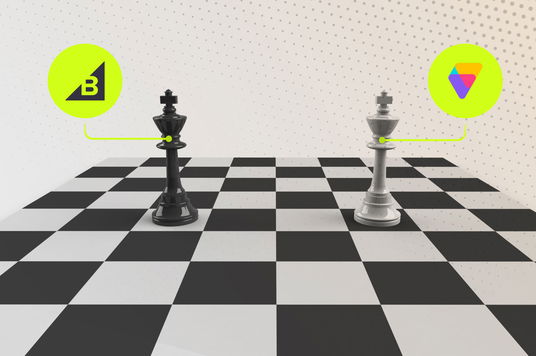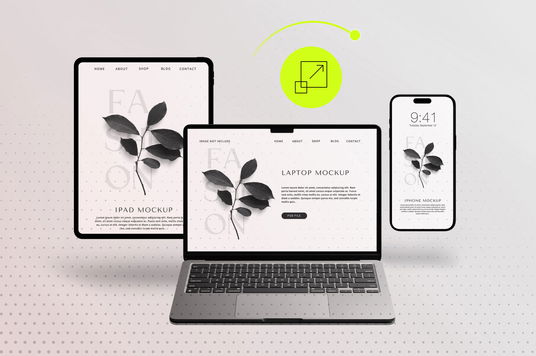How to Handle Engraving and Custom Orders in Luxury eCommerce

- Engraving Field Integration on Product Pages
- Quote-to-Order Flow for Made-to-Order Items
- Custom Nameplate Jewelry Ordering Process
- Proof Approval Process for Bespoke Orders
- Integration with Production Timelines in PDP
- Dynamic Validation and Error Handling
- Live Preview Technology Implementation
- Order Management Workflow for Custom Items
Custom engraving and made-to-order jewelry represent the pinnacle of personalization in luxury ecommerce, but they also present unique technical and operational challenges. Successfully implementing these features requires sophisticated engraving field integration on product pages that seamlessly guides customers through complex customization options while maintaining the premium experience expected from luxury brands.
The complexity of handling custom orders extends far beyond simple text input fields. Modern luxury jewelry ecommerce platforms must support real-time validation, live previews, dynamic pricing calculations, and integrated production workflows that ensure every custom piece meets exacting quality standards while delivering transparent communication throughout the creation process.
Key Insight: Luxury jewelry brands with sophisticated custom order systems see 45% higher average order values and 38% better customer retention compared to those offering only standard products, but implementation requires careful attention to user experience and backend integration.
Engraving Field Integration on Product Pages
Effective engraving field integration on product pages requires a delicate balance between functionality and elegance. The interface must provide comprehensive customization options without overwhelming customers or compromising the clean aesthetic expected from luxury brands.
Dynamic Field Configuration
Modern engraving systems must adapt to different product types and engraving capabilities. A wedding band might support interior and exterior engraving with different character limits, while a pendant could offer multiple engraving areas with varying size constraints. Your luxury jewelry ecommerce platform should dynamically configure these options based on the selected product variant.
The system should automatically adjust available fonts, character limits, and engraving positions based on the specific product dimensions and manufacturing capabilities. This prevents customer frustration and reduces the need for manual order corrections during production.
— Marcus Rodriguez, Head of Digital Experience, Cartier
Real-Time Character Validation
Character validation must go beyond simple length limits to consider the physical constraints of engraving technology. Different fonts require different spacing, and certain character combinations may not be feasible on curved surfaces or small areas.
Advanced validation systems should provide real-time feedback about character feasibility, suggest alternative fonts when space is limited, and automatically adjust spacing to optimize readability while maintaining aesthetic appeal.
Font Selection and Compatibility
Different engraving methods support different font styles, and the selection interface must guide customers toward compatible options while maintaining design flexibility. Script fonts may not be suitable for laser engraving on certain metals, while block fonts might not convey the elegance expected for luxury pieces.
The system should present font options contextually, showing only those that work well with the selected product and engraving method. Preview functionality should demonstrate how different fonts appear at actual engraving scale, helping customers make informed decisions about readability and aesthetic impact.
Multi-Language Character Support
Luxury jewelry customers often request engraving in multiple languages and character sets. The system must support Unicode characters while validating that the selected engraving method can accurately reproduce special characters, accents, and non-Latin scripts.
Character validation should include font compatibility checks for international characters, ensuring that customer expectations align with production capabilities. Alternative font suggestions should maintain the intended aesthetic while ensuring technical feasibility.
Quote-to-Order Flow for Made-to-Order Items
The quote-to-order flow for made-to-order items represents a critical conversion point where initial interest transforms into committed purchases. This process must balance transparency about pricing and timelines with the flexibility needed for truly custom creations.
Progressive Disclosure of Complexity
Made-to-order items often involve multiple variables that affect both price and production time. Rather than overwhelming customers with all options simultaneously, successful implementations use progressive disclosure to guide customers through increasingly specific choices.
The initial interface might present basic style options and size ranges, with detailed customization options appearing as customers make selections. This approach maintains engagement while building understanding of the complexity and value involved in custom creation.
Transparent Pricing Communication
Custom jewelry pricing involves base costs, customization premiums, and potential complexity surcharges. The quote system must communicate these elements clearly while maintaining the premium positioning that justifies luxury pricing.
Effective implementations provide price ranges during initial exploration, with firm quotes generated only after all specifications are confirmed. This approach manages expectations while allowing for the flexibility needed in true custom work.
Lead Time Communication
Custom jewelry production involves multiple stages with varying time requirements. The quote system must communicate realistic lead times while building anticipation for the final product. Customers need to understand that quality craftsmanship requires time, and this waiting period should be positioned as part of the luxury experience.
Lead time estimates should account for design approval cycles, material sourcing, production scheduling, and quality control processes. The system should provide milestone-based updates that maintain engagement throughout the creation process while managing delivery expectations.
Revision and Change Management
Even with detailed specifications, customers may request changes during the quote or production process. The system must accommodate reasonable revisions while protecting profit margins and production schedules.
Clear policies about revision windows, associated costs, and timeline impacts should be communicated upfront. The change management process should balance customer satisfaction with operational efficiency, providing flexibility where possible while maintaining clear boundaries.
Custom Nameplate Jewelry Ordering Process
The custom nameplate jewelry ordering process requires specialized workflows that accommodate the unique requirements of personalized text jewelry. Unlike simple engraving, nameplate jewelry often involves creating entirely new pieces based on customer specifications.
Typography and Layout Optimization
Nameplate jewelry success depends heavily on typography choices and layout optimization. The system must automatically adjust letter spacing, word positioning, and overall layout to create visually balanced pieces regardless of the text length or character combination.
Advanced systems use algorithmic layout optimization to ensure consistent visual weight and proportion, while providing customers with multiple layout options that maintain readability and aesthetic appeal.
Material and Finish Integration
Custom nameplate orders must seamlessly integrate material selection with text specifications. Different metals may require different engraving depths, and various finishes can affect text legibility and durability.
The ordering system should automatically validate material and text combinations, suggesting alternatives when conflicts arise and providing clear explanations of how different choices affect the final product appearance and longevity.
Size and Proportion Considerations
Nameplate jewelry success depends heavily on achieving proper proportions between text size, jewelry dimensions, and overall aesthetic balance. The system must automatically calculate optimal text sizing based on the available space while maintaining readability and visual appeal.
Different text lengths require different approaches to layout and sizing. Short names or initials might benefit from larger, more prominent lettering, while longer phrases may require careful spacing and potentially smaller fonts to maintain elegance and readability.
Chain and Setting Integration
Custom nameplate jewelry often involves coordination between the nameplate design and accompanying chains, settings, or mounting hardware. The ordering system should present compatible options and validate that all components work together harmoniously.
The integration should consider both aesthetic compatibility and functional requirements, ensuring that nameplate weight and dimensions are appropriate for the selected chain or mounting system while maintaining the overall design integrity.
Proof Approval Process for Bespoke Orders
The proof approval process for bespoke orders serves as the final quality gate before production begins, ensuring customer satisfaction while protecting the brand from costly revisions or returns.
Digital Proof Generation
Modern proof systems generate photorealistic renderings that accurately represent the final product appearance. These proofs must account for material properties, lighting conditions, and scale to provide customers with realistic expectations.
The proof generation process should be automated where possible, with manual review reserved for complex or unusual specifications. This ensures consistent turnaround times while maintaining quality standards.
— Elena Vasquez, Operations Director, Tiffany & Co. Custom Studio
Approval Workflow Management
The approval workflow must accommodate different customer communication preferences while maintaining clear documentation of all approvals and changes. Some customers prefer email communication, while others expect real-time notifications and in-platform messaging.
Effective systems provide multiple communication channels while maintaining a single source of truth for approval status and revision history. This ensures clear accountability and reduces the risk of miscommunication during the critical approval phase.
Integration with Production Timelines in PDP
Integration with production timelines in PDP (Product Detail Pages) provides customers with realistic expectations while helping them make informed decisions about custom orders. This integration must balance accuracy with the flexibility needed to accommodate production variables.
Dynamic Timeline Calculation
Production timelines vary significantly based on customization complexity, material availability, and current workshop capacity. Advanced systems calculate delivery estimates dynamically, considering all relevant factors to provide accurate projections.
The calculation should account for proof approval time, potential revision cycles, and shipping requirements to provide end-to-end delivery estimates that customers can rely on for gift-giving and special occasions.
Capacity-Based Availability
Custom jewelry production involves skilled artisans with limited capacity. The timeline system should integrate with production scheduling to provide realistic availability windows and prevent over-commitment of resources.
This integration allows for dynamic adjustment of delivery promises based on current workload and seasonal demand patterns, ensuring consistent delivery performance while maximizing production efficiency.
Dynamic Validation and Error Handling
Sophisticated validation logic prevents customer frustration while ensuring all custom orders meet production requirements. The validation system must operate in real-time, providing immediate feedback without interrupting the creative flow.
Multi-Layer Validation Architecture
Effective validation operates at multiple levels: character-level validation for immediate feedback, field-level validation for format requirements, and order-level validation for production feasibility. Each layer provides specific feedback appropriate to the validation failure.
The system should gracefully handle edge cases and provide constructive suggestions when validation fails. Rather than simply rejecting input, advanced systems offer alternatives that meet both customer intent and production constraints.
Contextual Error Messaging
Error messages must be crafted for luxury customers who expect helpful guidance rather than technical jargon. Messages should explain why certain combinations aren't possible and suggest viable alternatives that maintain the customer's design intent.
The messaging should maintain the brand voice while providing clear, actionable guidance that helps customers achieve their customization goals within technical constraints.
Live Preview Technology Implementation
Live preview technology transforms the custom ordering experience by providing immediate visual feedback that builds confidence and reduces uncertainty. The implementation must balance rendering quality with performance to maintain responsive interaction.
3D Rendering Integration
Modern preview systems use 3D rendering to show customizations from multiple angles, allowing customers to understand how engraving will appear on curved surfaces and how different viewing angles affect readability.
The rendering system should account for material properties, lighting conditions, and scale to provide realistic representations that accurately reflect the final product appearance.
— David Kim, Digital Innovation Lead, Bulgari
Performance Optimization
Preview rendering must be optimized for various device capabilities and network conditions. The system should provide progressive enhancement, offering basic previews for all users while delivering enhanced experiences for capable devices.
Caching strategies and progressive loading ensure responsive interaction even with complex 3D models and high-resolution textures, maintaining engagement throughout the customization process.
Order Management Workflow for Custom Items
Custom orders require specialized workflow management that accommodates the unique requirements of bespoke production while maintaining visibility and control throughout the creation process.
Status Tracking and Communication
Customers investing in custom jewelry expect detailed status updates throughout the production process. The workflow system should provide milestone-based communication that builds anticipation while managing expectations.
Automated status updates should be supplemented with personalized communication at key milestones, creating a premium service experience that justifies luxury pricing and builds long-term customer relationships.
Quality Control Integration
Quality control checkpoints must be integrated throughout the production workflow, with digital documentation and approval processes that ensure consistent standards while maintaining production efficiency.
The system should capture quality control data that can be used for continuous improvement while providing customers with confidence in the creation process and final product quality.
🎯 Key Takeaways
- Engraving field integration requires dynamic configuration that adapts to product specifications and manufacturing constraints
- Quote-to-order flows must balance transparency with flexibility, using progressive disclosure to manage complexity
- Custom nameplate processes need sophisticated typography and layout optimization for consistent visual appeal
- Proof approval workflows should provide photorealistic previews with clear approval documentation and revision tracking
- Production timeline integration requires dynamic calculation based on capacity, complexity, and current workload
- Live preview technology significantly reduces revision rates and increases customer confidence in custom orders
- Order management workflows must provide detailed status tracking with milestone-based customer communication
Frequently Asked Questions
1. How do you handle character limits for different engraving areas?
Character limits should be dynamically calculated based on the specific engraving area dimensions, selected font, and manufacturing capabilities. The system should provide real-time feedback about remaining space and automatically suggest font adjustments when limits are approached, ensuring optimal readability while maximizing personalization options.
2. What's the best approach for quote-to-order pricing transparency?
Provide price ranges during initial exploration with clear explanations of factors that affect final pricing. Generate firm quotes only after all specifications are confirmed, and break down pricing components (base cost, customization premiums, complexity surcharges) to help customers understand value while maintaining premium positioning.
3. How should production timelines account for approval delays?
Build buffer time into timeline calculations for proof review and potential revisions. Provide customers with clear expectations about approval timeframes and how delays affect delivery dates. Use automated reminders and escalation processes to minimize approval bottlenecks while maintaining quality standards.
4. What level of detail should live previews provide?
Live previews should be photorealistic enough to set accurate expectations while remaining responsive across devices. Include material properties, lighting effects, and scale references. Provide multiple viewing angles for 3D items and ensure previews accurately represent engraving depth and finish quality.
5. How do you validate custom nameplate designs for production feasibility?
Implement multi-layer validation that checks character combinations, spacing requirements, and material constraints. Use algorithmic layout optimization to ensure visual balance and provide alternative suggestions when initial designs aren't feasible. Validate against actual production capabilities rather than theoretical limits.
Ready to Choose the Right Development Partner?
Transform your luxury jewelry brand with sophisticated custom order capabilities that drive higher average order values and customer satisfaction. Our team specializes in creating seamless engraving and customization experiences that match your premium positioning.
Schedule Your Free ConsultationAbout 1Center
1Center is a leading ecommerce development agency specializing in luxury retail and high-value product experiences. Our team combines deep technical expertise with luxury market understanding to create ecommerce platforms that drive results for premium brands.
With over 8 years of experience in luxury ecommerce development, we've helped jewelry brands, fashion houses, and premium retailers create digital experiences that match their brand positioning and exceed customer expectations.
Written byPublished July 18, 2025
1Center


